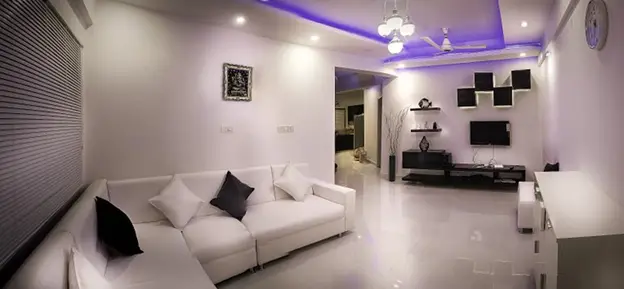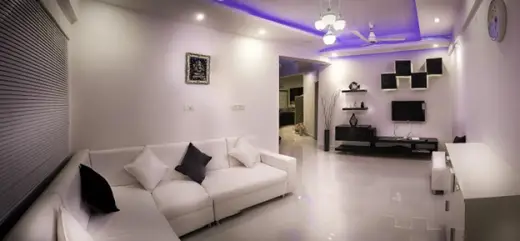How lighting influences mood and productivity guide, Online working light advice
How Lighting Influences Mood + Productivity
7 Jan 2022
Designing with Light in Mind
There is more to lighting than meets the eye. While most people think of light as a mere necessity for seeing, it actually has a profound impact on mood and productivity.
The right kind of lighting can energize you, while the wrong kind can make you feel sluggish, which is why it’s essential to carefully consider the type of lighting you want in your home or office.
The effect lighting has on mood and productivity tends to be more profound on the subconscious. In many cases, it’s possible to use lighting design to affect mood and productivity.
Lighting Affects Your Circadian Rhythm
Your circadian rhythm is the internal clock that regulates your body’s natural processes. This clock is affected by light, so it is so important to get enough sunlight during the day.
Exposure to sunlight helps keep your circadian rhythm on track, while lack of exposure can lead to all sorts of health problems.
The same thing applies to artificial light. Exposure to artificial light can disrupt your circadian rhythm and cause you to feel sluggish. Lighting can affect your well-being. Architectural wellness lighting is a way to help regulate the circadian rhythm through exposure to light.
You can use it to promote wellness and reduce stress in many cases. It’s possible to go overboard with lighting design, so it’s important not to overdo it with your home or office lighting.
If you’re going to use lighting to affect mood and productivity, it’s necessary to regularly use the right kind of lighting. It’s also important to pay attention to shadows and intensity levels.
Natural Light vs. Artificial Light
The more natural light you get during the day, the better your circadian rhythm is. When artificial light is used, it’s essential to choose the right kind. Standard incandescent light bulbs are one of the worst types of lighting that you can use for this purpose.
These lights give off a harsh glare and make it difficult to see things clearly. As such, they don’t bode well with productivity or mood enhancement. It’s a good idea to use fluorescent or LED light bulbs instead.
These light bulbs emit a softer light that is easier on the eyes. They also tend to be more energy-efficient, which is another bonus.
Lighting Design for Productivity
When it comes to lighting design for productivity, it’s crucial to use task lighting. This type of lighting is designed specifically for tasks that require intense focus, like studying or working at a computer.
Task lighting is typically placed closer to what you’re focusing on and serves to brighten the area so you can see more clearly.
This type of design tends to affect mood because it helps reduce eye strain and glare. It also improves productivity by making it easier to see things. There are many options for task lighting so that you can use it for almost any purpose.
Lighting Design for Mood Enhancement
Light is very important for our mood, which can affect productivity levels. The type of lighting you use in your home or office space will influence these feelings, so it’s vital that you choose the right one.
For example, research shows that bright lights are linked to higher energy and activity levels as well as heightened motivation. However, poor lighting can also lead to feelings of anxiety and depression. So it’s important to find a lighting system that provides the right amount of brightness for your needs.
If you are struggling with depression, be sure to consult with a doctor about what type of light therapy may be best for you. According to the Mayo Clinic, light therapy is a treatment option that uses lightboxes to deliver bright light to your eyes. This can help to improve moods and energy levels.
There is more than one way to design lighting for mood enhancement. For example, softer task lighting may be used as well. It’s also possible to create focal points in a room with light. You can use these focal points to draw attention to certain areas, like a work of art or a seating area.
When it comes to mood enhancement, it’s essential to experiment with different types of lighting. You may want to try using different colors or intensities to see what works best for you.
In a world where technology is constantly advancing, it’s no surprise that lighting design is evolving. With the help of new technologies, it’s possible to get the most out of your lighting. For example, you can use smart lighting to control your home or office lighting with the touch of a button. You can also use apps to adjust the mood of your lighting to coincide with your current activity or mood. There are many ways to use light to improve your wellbeing, so it’s important to experiment and find what works best for you.
Comments on this guide to how lighting influences mood and productivity article are welcome.
Lighting Articles
Lighting Posts
Tips To Choose the Right Lighting for Your Home
Best Solar Light Manufacturers In China
How to Use Lighting, Space and Material in Architectural Design
Building Articles
Residential Architecture
Comments / photos for the Designing with Light in Mind: How Lighting Influences Mood and Productivity advice page welcome


